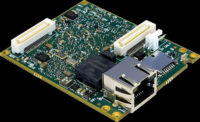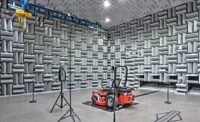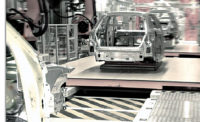Last month, NASA’s Mars Perseverance rover landed on the red planet after 5.5 months of traveling through space. The rover’s primary mission is to search for signs of ancient microscopic life and collect the first ever Martian soil samples for analysis.
Equally important to the NASA engineers, however, is the filming of the rover’s parachute deployment and the craft’s actual landing on Mars. NASA has taken still photos of the planetary descent in previous Mars missions, but never filmed a spacecraft during entry, descent and landing (EDL).
To achieve this unique goal, engineers mounted six Chameleon3 non-thermal machine vision cameras on the rover to take high-definition video of all EDL activity. The cameras were designed and built by FLIR Systems Inc. They were then tested to make sure they meet NASA specifications and properly perform in extreme environments. The cameras include five 1.3-megapixel CMOS models and one 3.2-megapixel USB camera.
Three CMOS cameras (PUC) are positioned to look up into the parachute support structure during the entry. Separate cameras are strategically located to look down during descent (DDC), and look up (RUC) and look down (RDC) from the rover.
Although the entire EDL process takes only 7 minutes, one wrong move can leave the whole mission in flames. That is why landing the rover is a high-stakes endeavor requiring expert engineering, according to Andrew Good, a NASA spokesperson.
The space agency’s experts are hopeful the rover landing and filming will proceed as planned. Before entering the Martian atmosphere, the Perseverance will disconnect from the rocket stage and be protected by a two-piece shell containing a parachute and a heat shield.
About 7 miles from the surface, the parachute will deploy. Just before this point, the three RUC cameras will begin recording to capture footage of the parachute as it supersonically inflates.
Five miles off the ground, the heat shield will drop off and expose the RDC camera, which will start recording the rover’s progress as it’s lowered from the descent stage. After this, the rover will drop away from the back shell and parachute.
From there, its descent will be managed by a rocket-powered descent stage called the “SkyCrane.” The RUC and RDC cameras will then start recording, and capture the moment the rover touches down on the surface.
A short time after this, the back shell and descent stage will jettison off the rover with the four parachute and descent stage cameras in tow. The RUC and RDC cameras will remain attached, although NASA engineers do not expect the cameras to survive too long in the harsh temperatures of Mars.
By that time, though, unprecedented footage of the spacecraft landing will have already been captured. Agency engineers acknowledge that it might take several weeks to get the landing footage back to Earth.
All FLIR cameras feature a 200-megabyte hard drive and a CS lens mount. CMOS models have a resolution of 1,280 by 1,024 pixels and a frame rate of 149 images per second, compared to 2,048 by 1,536 pixels and 55 images per second for the USB cameras.
For more information on industrial machine vision cameras, call 800-254-0630 or visit www.flir.com.




